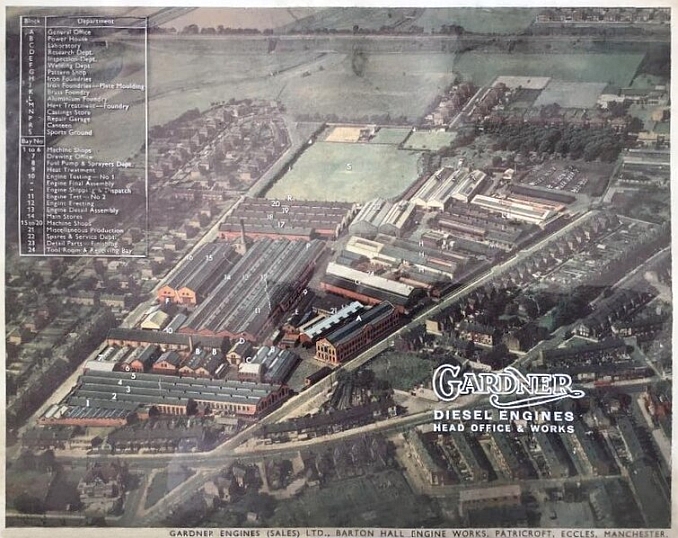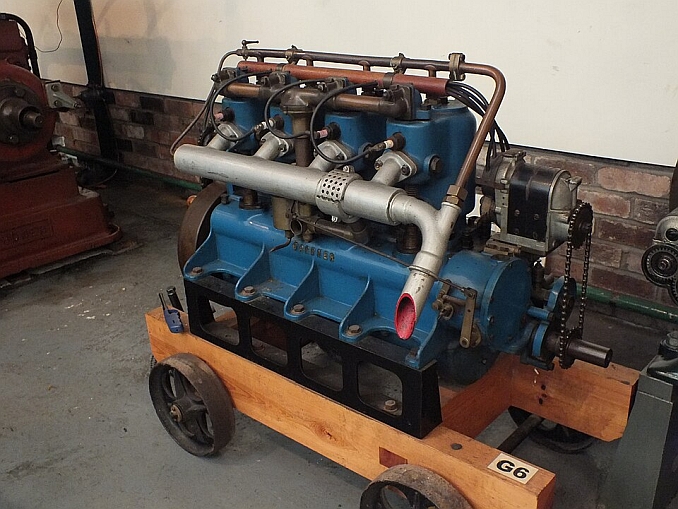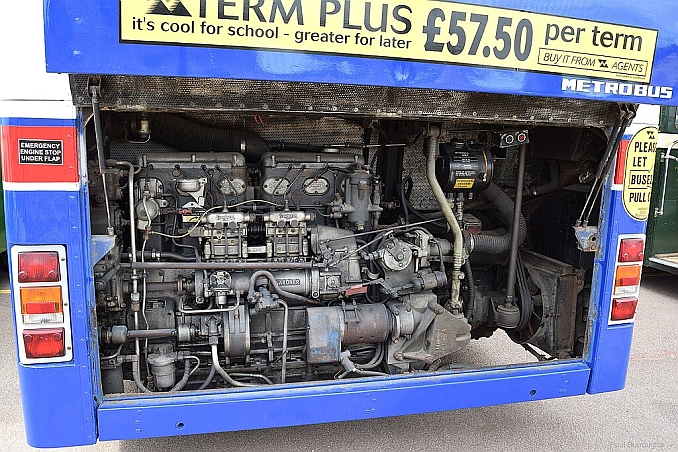Gardner Engines
The Gardner diesel and petrol engines have powered many UK public transport buses throughout the years.
L Gardner & Sons (Gardner Engines)
 Aerial view of L. Gardner & Sons’ Barton Hall Engine Works, Patricroft, Eccles, Manchester: Stevedt7, CC BY-SA 4.0, via Wikimedia Commons
Aerial view of L. Gardner & Sons’ Barton Hall Engine Works, Patricroft, Eccles, Manchester: Stevedt7, CC BY-SA 4.0, via Wikimedia Commons
History
- 1868: L Gardner & Sons was founded by Lawrence Gardner in Hulme (Manchester) as a small engineering / sewing-machine business.
- 1895–1903: Moved into gas and then diesel engines; diesel production is recorded from about 1903.
- 1930s: The LW series (4LW, 5LW, 6LW) becomes established; LW engines (introduced 1931/1930s) gain a reputation for durability and are fitted widely to buses and lorries.
- 1930s: Spares/overhaul business started alongside LW engines and became a major business line from the 1960s onwards, lasting long after new engine production ceased.
- 1950s–1970s: Gardner’s LX family (6LX and later 6LXB, 6LXC) is developed (low-revving, very fuel-efficient). These engines become the favoured powerplant for many British buses, coaches and haulage vehicles through the 1950s–1970s.
- 1976: Ownership change - Rolls-Royce took a stake.
- 1977: Sold to Hawker Siddeley.
- 1986: Sold to Perkins Engines (Peterborough). Production of Gardner engines continued until the late 1980s.
- 1994: Perkins Engines was acquired by Caterpillar Inc.
- 1995: Gardner engine production in Patricroft, Manchester, was closed down by Caterpillar.
Sources
Gardner Petrol Engines
In the early 20th century, Gardner produced a limited range of petrol engines, primarily for industrial machinery, marine vessels, and specialised vehicles. Petrol engines were never widely adopted for UK buses. From the 1930s, Gardner focused on diesel engines, which became the standard for buses and trucks thanks to their reliability and fuel efficiency.
The sound of a Gardner engine
Ask any bus enthusiast and they’ll tell you: Gardner engines had a sound all of their own. Unlike the harsher roar of many Leyland or AEC units, a Gardner was slow-revving and deliberate, with a steady, almost musical beat. At idle there was a soft mechanical “tick,” while under load the engine produced a throaty, smooth thrum that carried through city streets. The 6LX and 6LXB in particular became legendary — you could often identify a Gardner-powered bus by ear long before you saw it. This distinctive note is one reason Gardner engines remain so fondly remembered today.
A Small Selection of buses with Gardner diesel engines
| AEC Renown | 663 | Gardner 6LW | 1958-1962 | motorcar.net/aec/renown and Wikipedia: AEC Renown |
| Bristol Lodekka | FS/FL/FLF | Gardner 5LW, 6LW, 6LX | 1953-1968 | Wikipedia: Bristol Lodekka |
| Bristol RE | RELH/RESL/RELL/REMH | Gardner 6HLX/6HLXB | 1962-1982 | 6lda28.com and Wikipedia: Bristol RE |
| Bristol VR | VRT/SL VRT/SL3 | Gardner 6LX, 6LXB, 6LXC | 1966-1981 | Wikipedia: Bristol VR and Wikipedia Commons image description |
| Daimler Fleetline | Fleetline series | Gardner 6LW/6LX/6LXB | 1960-1983 | Wikipedia: Daimler Fleetline and aronline.co.uk |
| Guy Arab | Arab mk III | Gardner 5LW/6LW | 1942-1969 | commercialmotor.com and Wikipedia: Guy Arab |
| Leyland National | National/National 2 | Gardner 6HLXB/6HLXCT | 1972-1985 | Wikipedia: Leyland National |
| Dennis Dominator | Dominator (various codes) | Gardner 6LXB | 1977-1996 | Wikipedia: Dennis Dominator and cptb.ca/wiki |
| Seddon Pennine | Pennine RU/Pennine 7 (variants) | Gardner 6LX/6LXB | 1963-1982 | Wikipedia: Seddon Pennine |
 Gardner 1908 Type 4CR Marine Petrol Engine: Photograph by Clem Rutter, Rochester, Kent. (www.clemrutter.net)., CC BY-SA 3.0, via Wikimedia Commons
Gardner 1908 Type 4CR Marine Petrol Engine: Photograph by Clem Rutter, Rochester, Kent. (www.clemrutter.net)., CC BY-SA 3.0, via Wikimedia Commons
 paulburr73, CC BY-SA 2.0, via Wikimedia Commons
paulburr73, CC BY-SA 2.0, via Wikimedia Commons
ABOVE: The all important engine end of West Midlands Travel Mk2 MCW Metrobus DR102/64 3053 (F53 XOF) with its MCW H43/30F bodywork. Looking at my 1991 WMT fleetlist it was new to Coventry Wheatley St garage in February 1989. Seemingly this was a Coventry bus all its working life. I’m assuming this is a Gardner 6LXB engine. paulburr73
_-_IMG_2583.jpg) BulldozerD11, CC BY-SA 3.0, via Wikimedia Commons
BulldozerD11, CC BY-SA 3.0, via Wikimedia Commons
ABOVE: A Sectioned Gardner 6LW engine built in 1961 for use in a Bristol Commercials Bus. This engine was used for training purposes by Trent Bus co. The Engine is on display in the Anson Engine Museum at Poynton Nr Manchester England. BulldozerD11
.jpg) Gardner 6LXB engine: km30192002, CC BY 2.0, via Wikimedia Commons
Gardner 6LXB engine: km30192002, CC BY 2.0, via Wikimedia Commons

